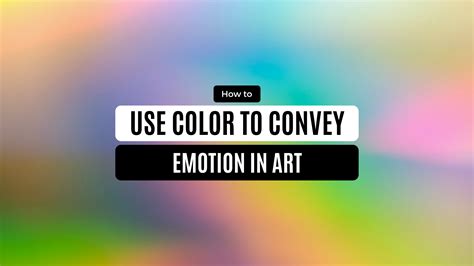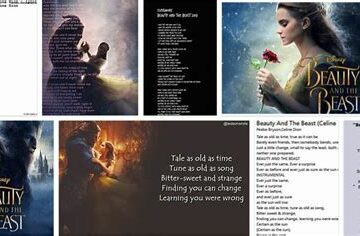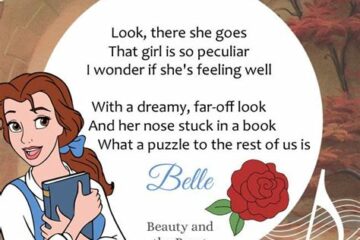The Use Of Color In Conveying Emotion In Beauty And The Beast

The Use Of Color In Conveying Emotion In Beauty And The Beast
Understanding The Use Of Color In Film Narratives
The use of color in film is a powerful tool that filmmakers employ to evoke emotions, set the tone, and enhance storytelling. Color can signify various themes, represent character emotions, and denote changes in the narrative arc. In this context, the use of color becomes pivotal as it intertwines with visual storytelling techniques.
Different colors can resonate with audiences in unique ways, tapping into collective cultural associations. For instance, warm colors like red and orange usually evoke feelings of warmth, passion, or anger, while cool colors such as blue and green often convey calmness, sadness, or tranquility. Filmmakers carefully manipulate these associations to guide viewers’ emotional responses.
Moreover, the psychological impact of color is well-documented; it can influence mood and behavior on a subconscious level. This makes the strategic use of color not just a stylistic choice but a fundamental aspect of storytelling. Whether it’s a bright, vibrant palette that signifies joy or a muted, monochromatic scheme that underscores despair, the emotional undertones conveyed through color choices create a deeper connection with the audience.
Understanding the use of color in film narratives allows viewers to appreciate the intricate ways filmmakers craft their stories. It is an essential element that transcends mere aesthetics, functioning as a narrative device that shapes and informs the emotional landscape of the film.
The Development Of Color Symbolism In Beauty And The Beast
The use of color in *Beauty and the Beast* plays a significant role in symbolizing the emotional journey of its characters and enhancing the narrative. Throughout the film, different colors signify contrasting themes and emotions, helping to deepen the viewer’s connection to the story. This development of color symbolism can be traced through various elements, including character costumes, scenery, and pivotal moments in the storyline.
Initially, the film employs a muted color palette that reflects Belle’s dreary existence in the provincial town. Shades of gray and brown dominate her surroundings, symbolizing her longing for adventure and love. This stark contrast becomes evident when Belle first encounters the enchanted castle, which is infused with vibrant colors that signify magic, warmth, and hope. The symbolic use of color here serves to show Belle’s transition from captivity to the enchanting world of the Beast.
As the film progresses, the use of color becomes increasingly sophisticated. For instance, the contrasting use of warm and cool tones is prevalent during Belle and the Beast’s evolving relationship. Initially, cool colors—like blue and gray—are associated with the Beast, reflecting his sorrow and isolation. However, as love begins to flourish, warm colors like red and gold come into play, symbolizing passion and the warmth of newfound affection. This transition illustrates how the use of color metaphorically mirrors the growth of their relationship.
Additionally, the iconic ballroom scene showcases the culmination of this color symbolism. The lavish use of golden hues emphasizes a turning point for both characters—representing trust, vulnerability, and the beauty of their connection. The contrast between the warm chandelier lights and the deep blues of Belle’s gown serves to highlight the emotional depth and significance of the moment.
In essence, the development of color symbolism in *Beauty and the Beast* not only enhances the visual storytelling but also invites the audience to perceive the characters’ emotional evolutions more deeply. Through careful consideration of each hue and its placement, the film powerfully demonstrates the importance of color in conveying underlying emotions and themes throughout the narrative.
Emotional Impact: The Use Of Color In Key Scenes
The The Use of color in key scenes of Beauty and the Beast significantly enhances the emotional depth and storytelling impact of the film. Color not only sets the mood but also communicates the inner feelings of the characters, enriching the audience’s understanding and experience.
One of the most striking examples of this is the iconic ballroom scene, where the vibrant gold and blue hues convey a sense of magic and romance. The rich gold represents warmth and love, while Belle’s elegant blue dress symbolizes her individuality and courage. This juxtaposition allows viewers to feel the blossoming relationship between Belle and the Beast, creating a memorable, emotionally charged moment.
Conversely, the darker tones used in scenes depicting the Beast’s isolation and turmoil evoke feelings of sadness and despair. The somber color palette reflects his inner struggle and the transformation he undergoes, painting a vivid picture of his emotional state. As the story progresses, brighter colors gradually seep into these scenes, signaling hope and redemption.
The The Use of color also plays a crucial role in establishing the overall theme of transformation. For instance, as Belle and the Beast develop their relationship, the introduction of warmer colors signifies the gradual unlocking of their emotions and vulnerabilities. The shift from dark, muted tones to vibrant shades mirrors their journey toward love and acceptance.
The deliberate use of color serves as an emotional storytelling device that deepens the audience’s connection to the characters and their experiences. Through strategic color choices, Beauty and the Beast utilizes visual storytelling to evoke a powerful emotional response, illustrating the profound impact that color can have on narrative and character development.
Character Development Through The Use Of Color Choices
The use of color in film is not merely aesthetic; it plays a crucial role in character development, particularly in Beauty and the Beast. Each character’s color palette reflects their personality, emotional state, and transformation throughout the story. By examining the colors associated with key characters, we can gain insight into their arcs and the themes of the narrative.
For instance, Belle is frequently surrounded by vibrant, warm colors, especially in her signature yellow gown. This choice signifies her warmth, optimism, and love for life. Initially, in her muted blue dress, Belle represents a sense of isolation and longing for adventure. As she transitions into the yellow gown, it symbolizes her growth, embracing her identity and the potential for love.
In contrast, the Beast’s color journey is steeped in darker tones, primarily blues and blacks. These shades reflect his troubled past and emotional turmoil. However, as he opens his heart and begins to change, subtle shifts in the color palette occur, introducing warmer hues that signify hope and redemption. The gradual lightening of his color scheme mirrors his character development, highlighting the transformative power of love.
Supporting characters also contribute to this dynamic. The enchanted objects, such as Lumière and Cogsworth, adopt vibrant and playful colors that reflect their humorous and loyal natures. In contrast, Gaston’s bold reds and deep browns emphasize his arrogance and aggressive personality, further solidifying his role as the antagonist.
Overall, colors serve as a visual shorthand to communicate character traits and emotional states in Beauty and the Beast. The strategic use of color choices enriches the narrative, allowing viewers to connect deeper with the characters and their journeys, ultimately enhancing the overall emotional impact of the film.
Results Of Color Use On Audience Emotions And Perceptions
The use of color in film, particularly in The Use of color within *Beauty and the Beast*, significantly shapes audience emotions and perceptions. Color functions as a visual language, allowing filmmakers to communicate complex emotional narratives and enhance viewer engagement.
For instance, warm colors such as red and orange evoke feelings of passion, warmth, and love, which are prominently displayed during Belle and the Beast’s evolving relationship. In contrast, cooler hues like blue and green are often associated with sadness or conflict, mirroring the characters’ struggles with their identities and circumstances. This strategic application of color influences how audiences interpret these emotional arcs.
Furthermore, the impact of color isn’t just about immediate emotional responses; it also works to create lasting impressions. When viewers associate certain colors with specific characters or scenes, these visual cues become ingrained in their memory, reinforcing the emotional landscape of the narrative. This lingering effect can intensify emotional reactions with subsequent viewings, demonstrating the powerful role The Use of color plays in shaping audience perceptions over time.
The results of color use in *Beauty and the Beast* foster a deeper emotional connection between the audience and the film. By carefully selecting color palettes that resonate with character intentions and emotional states, filmmakers masterfully enhance the storytelling experience, ultimately inviting viewers to reflect on their emotions and perceptions in more profound ways.
Top 10 Disney Characters You Didn’t Know About
December 30, 2024A Deep Dive Into Disney Princesses And Their Stories
December 29, 2024The Meaning Behind Beauty And Beast Lyrics
December 29, 2024Why Beauty And The Beast Is A Timeless Disney Classic
December 29, 2024The Role Of Disney Princesses In Modern Culture
December 29, 2024Exploring The Themes In Beauty And The Beast Lyrics
December 28, 2024
Leave a reply Cancel reply
Recommended
-
How Beauty And The Beast Lyrics Reflect Love And Growth
December 17, 2024 -
Why Beauty And The Beast Is A Timeless Disney Classic
December 29, 2024 -
A Deep Dive into the Making of Walt Disney’s Beauty and the Beast
September 26, 2023









